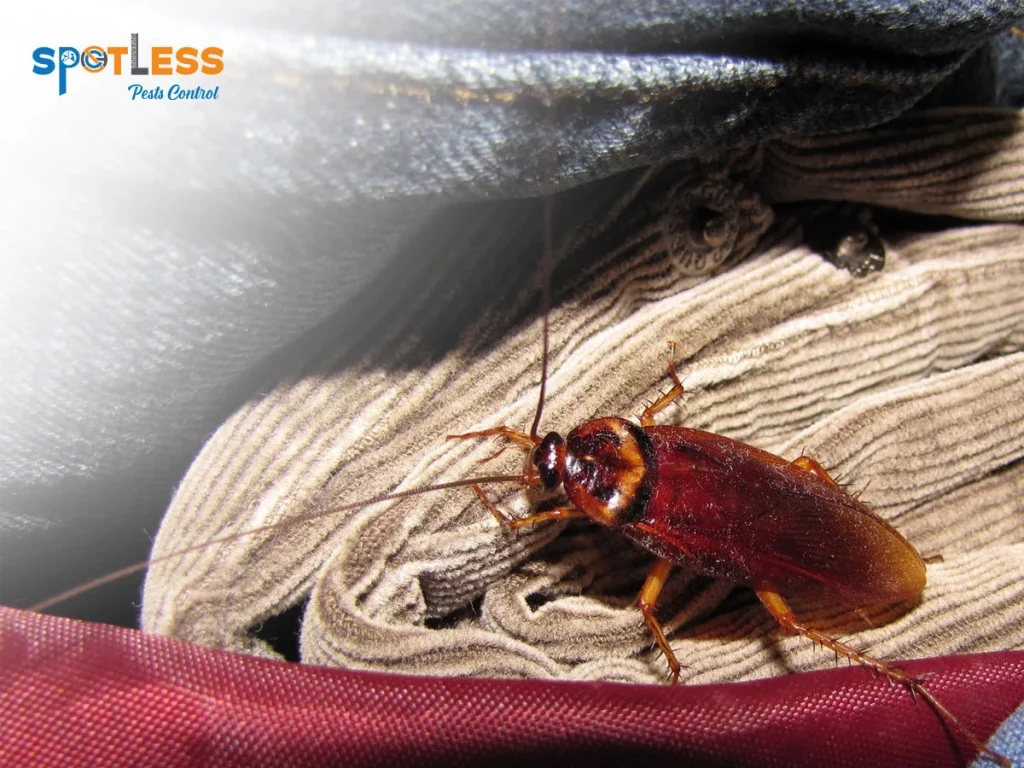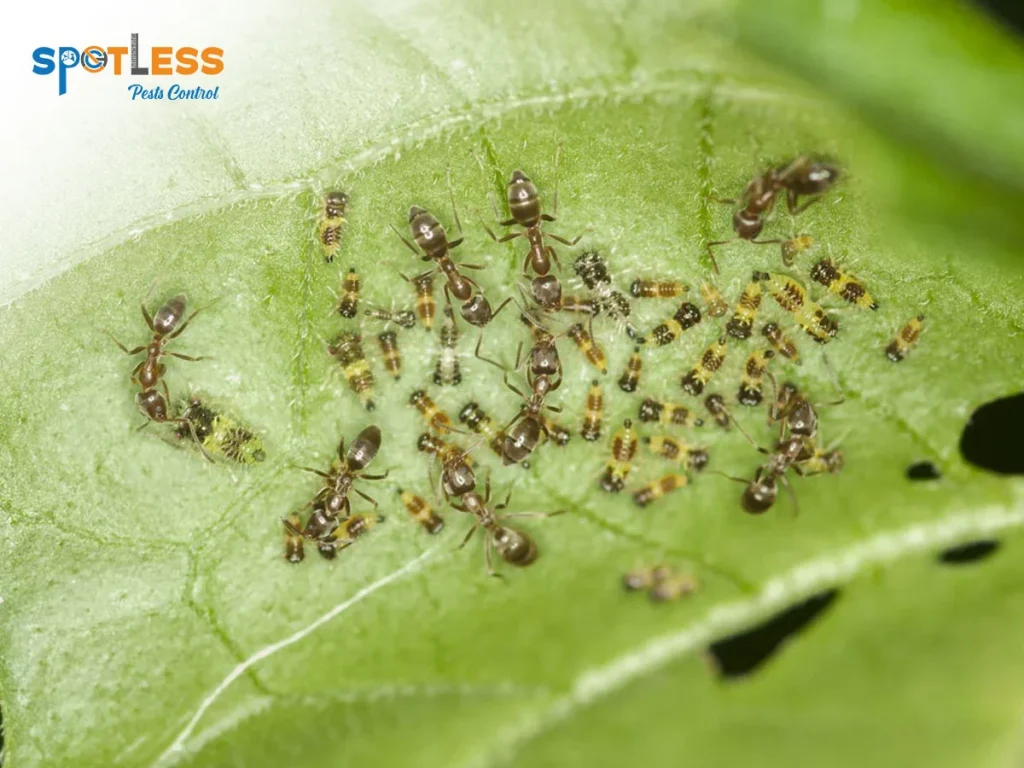How To Identify Insect Infestations & Address It The Right Way?
Recognising insect infestations is crucial to stop the infestation from growing and protect your family’s overall well-being. Insects often carry diseases, so early detection is vital in disease prevention. Insect infestations extend far beyond nuisance and discomfort; they impact our lives badly. These infestations can wreak havoc on property, causing structural damage that requires costly repairs. Moreover, certain insects like termites and carpenter ants can damage the structural foundation of buildings, posing safety risks.
Types of Insects Commonly Found in Infestations

Insect infestations can manifest in various forms, but they often fall into two primary categories: household pests and agricultural pests.
Household Pests
They contain insects that invade homes, seeking shelter, food, and suitable breeding conditions. This category includes nuisances like cockroaches, ants, termites, bedbugs, and spiders. Each species possesses unique behaviours and survival tactics that make them particularly troublesome when they infest our living spaces.
How To Use Rodenticides To Get Rid Of Infestations Promptly?
Agricultural Pests
They primarily target crops and plants. These pests pose significant threats to agricultural productivity and food security. Common examples include aphids, weevils, locusts, and whiteflies. Their voracious appetites and rapid reproduction can devastate crops, leading to substantial economic losses.
Factors Contributing to Insect Infestations

Environmental Conditions
Insects thrive in environments that offer favourable conditions for their survival and reproduction. Several factors, for instance, humidity, temperature, and water availability, play crucial roles in insect infestations. For example, warm and humid climates are ideal for mosquito breeding, while excellent, damp areas can attract silverfish.
Food Sources
Food availability is a significant driver of insect infestations. Insects are drawn to places where they can find ample food sources like crumbs, garbage, and stored pantry items. Understanding the specific dietary preferences of different pests is essential for preventing infestations.
Shelter
Insects seek shelter to protect themselves from predators and harsh environmental conditions. Homes, warehouses, and agricultural structures provide ideal hiding spots for many pests. Cracks, crevices, and dark corners become breeding grounds for pests like rodents, which can, in turn, attract insect predators.
Recognising Insect Infestation Signs

Visual Signs
- One of the most prominent visual signs of insect infestation is the insects’ presence. Whether it’s a line of ants marching across your kitchen counter, cockroaches scuttling in the corners, or bedbugs hiding in the seams of your mattress, seeing these pests in your living space is a surefire indicator of trouble.
- Damaged Structures or Products by Insects leave behind telltale signs of their presence, such as chewed wood, paper, or fabrics. Insects like Termites can silently eat wooden structures, making them weakened and brittle.
- Some insects, like wasps or bees, build nests in or around your home. These nests can vary in size and location, but their presence is a clear sign of an infestation.
Auditory Clues
Certain insects, like termites or carpenter ants, can make soft but audible sounds while working inside your home’s wood. These subtle noises might be the only auditory cues of an infestation, so paying attention is essential.
Olfactory Clues
Insects can produce distinctive odours. For instance, a musty or sweet smell could indicate a bedbug infestation. At the same time, a foul or pungent odour might indicate a cockroach problem. These smells are often more noticeable in areas where the infestation is severe.
Behavioural Signs
- If you notice a sudden increase in insect activity, it’s a significant warning sign. For example, suppose you’ve always had a few ants here and there but suddenly find them swarming in more substantial numbers. In that case, there’s likely a nearby nest or colony.
- Pets can sense and react to the presence of pests. Dogs or cats may become agitated, scratch excessively, or focus on areas where insects hide in your home.
Physical Symptoms
Bites, Rashes, or Allergic Reactions by Insects. For instance, bedbugs or fleas can leave itchy, red bite marks on your skin. These can sometimes be confused with other skin conditions, so it’s crucial to consider them in the context of different signs.
Additionally, some people may experience allergic reactions to insect bites, manifesting as more severe skin reactions or respiratory symptoms.
Home and Property Inspection

Common Hiding Spots
During a home and property inspection, it’s crucial to scrutinise common hiding spots for potential issues.
- Check behind furniture and appliances for signs of pests, moisture damage, or electrical problems
- . Inspect crawlspaces, attics, and basements for structural concerns like cracks, leaks, or inadequate insulation.
- Additionally, thoroughly examine the roof for missing shingles, damaged flashing, or signs of wear and tear.
Vulnerable Areas
- Pay special attention to weak areas like the foundation, windows, and doors.
- Look for cracks or settling in the foundation, indicating structural instability.
- Ensure your house windows and doors have proper sealing and insulation, which can impact energy efficiency and security.
Tools and Equipment for Inspection
To conduct a comprehensive inspection, equip yourself with essential tools such as a flashlight, moisture meter, thermal imaging camera, and electrical testers. These tools help you identify problems like water leaks, insulation issues, and electrical faults.
How Spider Control Service in Canberra Keeps Home Pest Free?
Importance of Early Detection of Pest Infestation
- Early detection of pest infestations is crucial as it minimises potential damage and health risks.
- Identifying pests in their initial stages helps prevent structural damage, crop loss, or the spread of diseases.
- Additionally, early detection can significantly reduce the cost and effort required for pest control.
Steps to Take When Signs Are Detected
Isolation and Quarantine
Isolating affected areas or items containing pests can prevent their spread. Quarantine measures should be implemented promptly to control the infestation.
Cleaning and Sanitisation
Thoroughly cleaning and sanitising affected areas and objects is essential to remove pests and their traces, disrupting their lifecycle.
Elimination Methods
Employ targeted pest control methods such as traps, pesticides, or natural predators to eliminate the infestation tailored to the specific pest species.
The bottom line is Continued vigilance, and proactive measures are essential to prevent future infestations. Regular inspections, maintaining hygiene standards, and implementing preventive strategies like sealing entry points or using pest-resistant materials can safeguard against recurrent pest problems. Timely action and a comprehensive approach are keys to effective pest management.
For professional pest control solutions call Spotless Pests Controls Today!
Follow us on Facebook




